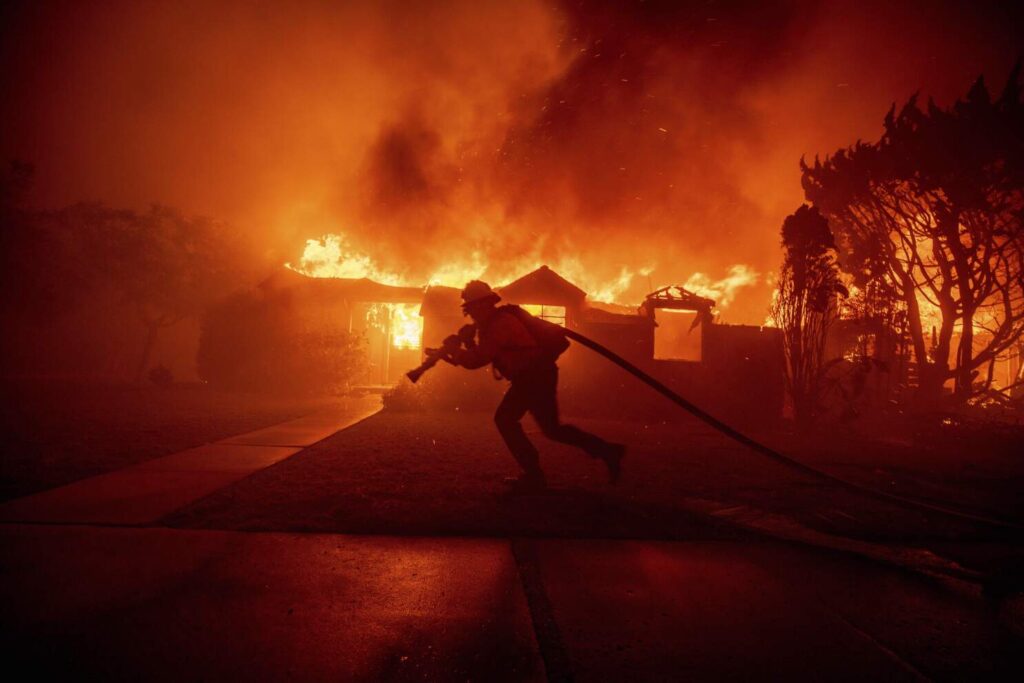LA wildfire damages expected to reach a record $135 billion

A firefighter battles the Palisades Fire as it burns a structure in the Pacific Palisades neighborhood of Los Angeles, Tuesday, Jan. 7, 2025. (AP Photo/Ethan Swope)
The Los Angeles wildfires are on track to become one of the costliest disasters in U.S. history, with damages already expected to surpass $135 billion (£109.7 billion). Private forecaster AccuWeather has estimated losses between $135 billion and $150 billion, as the fires ravage an area home to some of the most expensive properties in the country.
The insurance industry is bracing for a significant blow, with analysts from firms like Morningstar and JP Morgan projecting insured losses to exceed $8 billion. Fire authorities report that over 5,300 structures have been destroyed by the Palisades fire, and more than 5,000 have been lost to the Eaton fire. With firefighting efforts still underway, the full extent of the damage is still unfolding.
AccuWeather Chief Meteorologist Jonathan Porter stated, “These fast-moving, wind-driven infernos have created one of the costliest wildfire disasters in modern U.S. history.” The 2018 Camp Fire in northern California, which caused insured losses of about $12.5 billion, currently holds the record for the highest insured wildfire costs. That fire killed 85 people and displaced more than 50,000 individuals.
Insurance giant Aon predicts that, due to the high property values in the affected areas, this wildfire could rank among the top five most expensive fires. The total losses, including uninsured properties, will likely be even higher.
Even after the fires are controlled, Porter warned of potential long-term impacts on public health and tourism. The disaster also exacerbates the ongoing crisis in the insurance industry. Homeowners with mortgages are typically required to have property insurance, but many companies have been raising premiums or canceling policies due to the rising risks of natural disasters like wildfires, floods, and hurricanes.
As insurers withdraw, many homeowners are turning to state-run home insurance plans, which are often more expensive and offer less coverage. In California, the number of policies provided by the state’s Fair Plan has more than doubled since 2020, from around 200,000 to over 450,000 by September of last year. Areas affected by the fires have some of the highest take-up rates, raising concerns about the program’s financial stability.
Denise Rappmund, a senior analyst at Moody’s Ratings, noted that the fires would have “widespread, negative impacts for the state’s broader insurance market.” She added that increased recovery costs could lead to higher premiums and reduced property insurance availability, as well as long-term damage to property values and strain on public finances.
